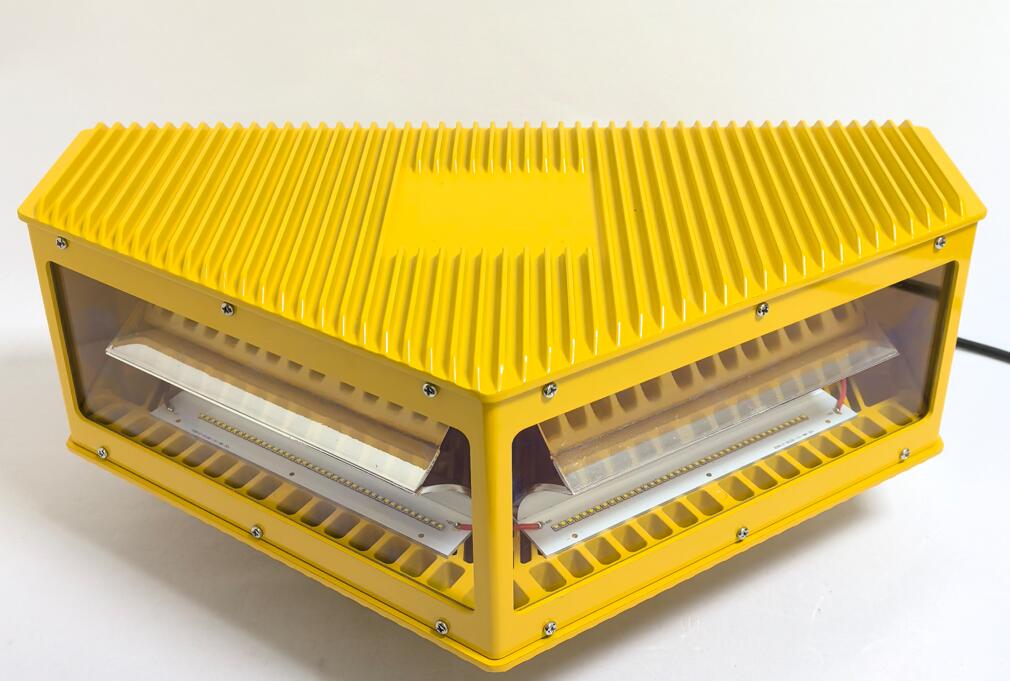LED Aviation Light: The Future of Aircraft Illumination Introduction to LED Aviation Light Technology
The aviation industry has witnessed a remarkable transformation with the widespread adoption of LED aviation light systems. These advanced lighting solutions have revolutionized aircraft visibility, safety, and operational efficiency. Unlike traditional incandescent and halogen lights, LED aviation light technology offers superior performance characteristics that make it indispensable in modern air travel.
LED aviation light systems now serve critical functions across all aspects of flight operations, from runway illumination to aircraft position marking. Their implementation represents one of the most significant advancements in aviation safety technology in recent decades, combining energy efficiency with unparalleled reliability in demanding flight conditions.
| LED Aviation Light |
Technical Advantages of LED Aviation Lights
The superiority of LED aviation light systems stems from several key technological advantages:
Energy Efficiency: LED aviation lights consume significantly less power than conventional lighting systems, reducing electrical load on aircraft systems and decreasing fuel consumption.
Extended Lifespan: With operational lives exceeding 50,000 hours, LED aviation lights dramatically reduce maintenance requirements and associated costs.
Enhanced Visibility: The intense, focused light output of LED aviation lights improves detection range and recognition in all weather conditions.
| LED Aviation Lights |
Durability: LED aviation light fixtures demonstrate exceptional resistance to vibration, extreme temperatures, and moisture ingress.
Instant On/Off: Unlike traditional bulbs, LED aviation lights achieve full brightness immediately, with no warm-up period required.
Critical Applications in Modern Aviation
LED aviation light technology has become essential across multiple aviation applications:

Aircraft Exterior Lighting Systems
Position Lights: LED aviation lights provide the required red (port), green (starboard), and white (tail) navigation lighting with improved visibility and reliability.
Anti-Collision Systems: High-intensity LED strobe lights offer superior warning capabilities to prevent mid-air incidents.
Landing/Taxi Lights: Powerful LED aviation light arrays illuminate runways and taxiways with exceptional clarity.
Airport Infrastructure Lighting
Runway Edge Lights: LED technology provides clear runway boundary definition with minimal power consumption.
Approach Lighting Systems: LED aviation lights guide aircraft during critical landing phases with precise light distribution.
Obstruction Lighting: Tall structures utilize LED aviation lights for high-visibility marking day and night.
Cabin and Interior Applications
Passenger Cabin Lighting: LED aviation light systems enable customizable ambient lighting with reduced heat output.
Emergency Lighting: Reliable LED exit signs and path marking ensure passenger safety during evacuations.
Regulatory Compliance and Certification
The implementation of LED aviation light systems must meet stringent international standards:
FAA Regulations (United States):
Technical Standard Order (TSO) approvals for LED aviation light installations
AC 20-74 guidelines for aircraft exterior lighting systems
EASA Standards (Europe):
CS-25 certification requirements for LED aviation light equipment
Specific photometric performance criteria
ICAO Guidelines (International):
Annex 14 specifications for aerodrome LED lighting
Standardized color chromaticity requirements for LED aviation lights
Manufacturers must conduct extensive testing to verify that LED aviation light products meet all applicable visibility, durability, and electromagnetic compatibility standards before receiving certification for aviation use.
Emerging Innovations in LED Aviation Lighting
The evolution of LED aviation light technology continues with several promising developments:
Smart Adaptive Systems: Next-generation LED aviation lights automatically adjust intensity based on ambient light conditions and weather.
Integrated Monitoring: Built-in diagnostics in LED aviation light fixtures enable predictive maintenance and fault detection.
Advanced Thermal Management: New cooling solutions extend LED aviation light performance in extreme environments.
Wireless Control Networks: Digital control systems allow centralized management of LED aviation light installations.
Micro-Optics Integration: Precision optical systems optimize light distribution patterns for specific aviation applications.
Implementation Challenges and Solutions
While LED aviation light technology offers numerous benefits, implementation presents certain challenges:
Electromagnetic Interference: Careful shielding and filtering ensure LED aviation light systems don't affect sensitive avionics.
Color Consistency: Strict binning processes maintain uniform chromaticity across all LED aviation light units.
Thermal Management: Advanced heat sink designs prevent performance degradation in high-temperature environments.
Regulatory Harmonization: Ongoing efforts to standardize LED aviation light specifications across jurisdictions.
Retrofit Compatibility: Adapter solutions enable LED aviation light upgrades in legacy aircraft systems.
Future Outlook for LED Aviation Lighting
The future of LED aviation light technology appears exceptionally bright, with several trends emerging:
Increased Market Penetration: LED aviation lights will continue replacing conventional systems across all aircraft categories.
Enhanced Smart Features: Future LED aviation lights will incorporate more sophisticated monitoring and control capabilities.
Improved Energy Efficiency: Ongoing semiconductor advancements will further reduce power requirements.
Expanded Color Options: New LED formulations may enable additional signaling applications.
Integration with Avionics: Closer coupling with flight management systems for optimized performance.
As the technology matures, LED aviation light systems will become even more reliable, efficient, and integral to aircraft operations, cementing their position as the illumination standard for modern aviation.
LED aviation light technology has fundamentally transformed aircraft lighting systems, offering unparalleled benefits in safety, efficiency, and reliability. From cockpit to cabin, runway to fuselage, these advanced lighting solutions have become indispensable components of modern aviation infrastructure. As the industry continues to evolve, LED aviation lights will play an increasingly vital role in ensuring safe and efficient air travel worldwide. Their ongoing development promises even greater advancements in the years ahead, solidifying their position as the illumination technology of choice for the aviation sector.
